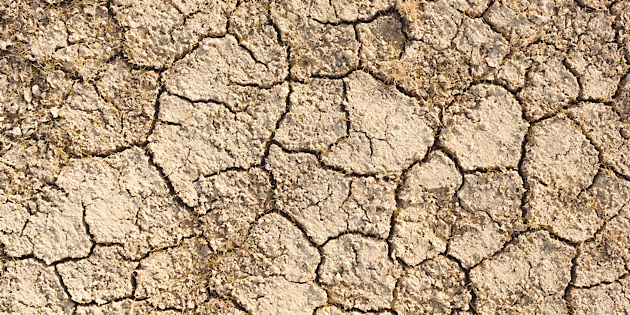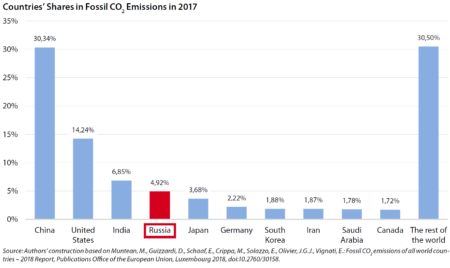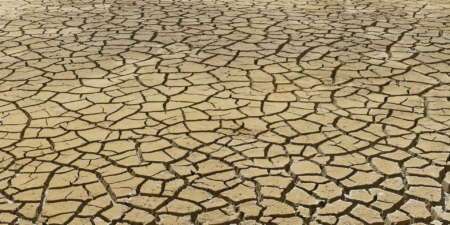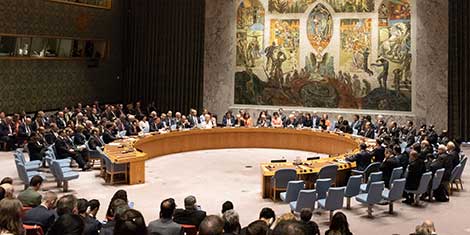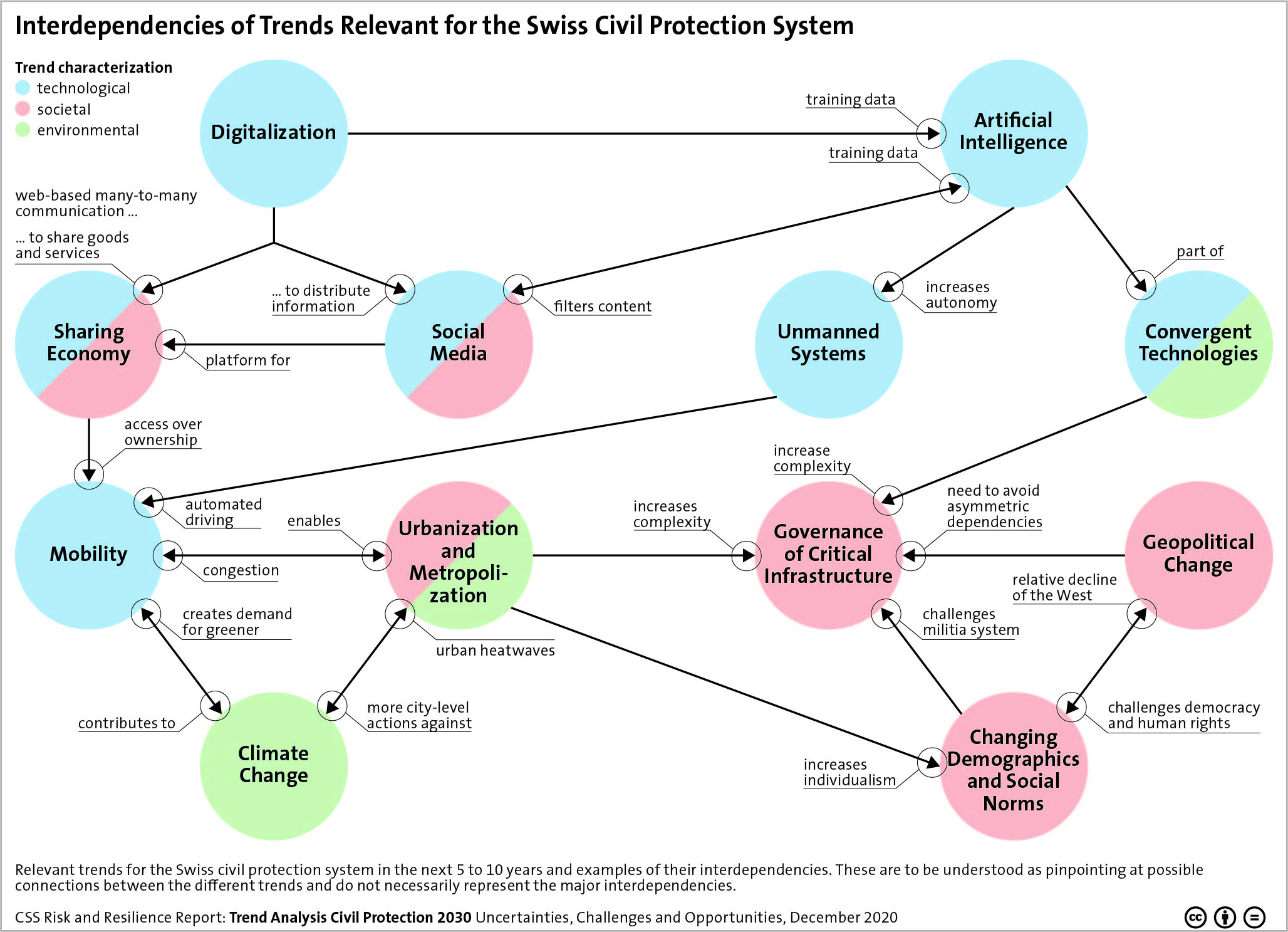 Artificial Intelligence, Digitalization, Climate Change – many overarching trends and developments have the potential to alter the lives of billions of people in the coming years. This graphic maps the relevant trends for the Swiss civil protection system in the next 5 to 10 years and outlines examples of their interdependencies.
Artificial Intelligence, Digitalization, Climate Change – many overarching trends and developments have the potential to alter the lives of billions of people in the coming years. This graphic maps the relevant trends for the Swiss civil protection system in the next 5 to 10 years and outlines examples of their interdependencies.
For an analysis on how these trends will affect the civil protection system in Switzerland, read this CSS “Trend Analysis Civil Protection 2030 Uncertainties, Challenges and Opportunities” report here.

